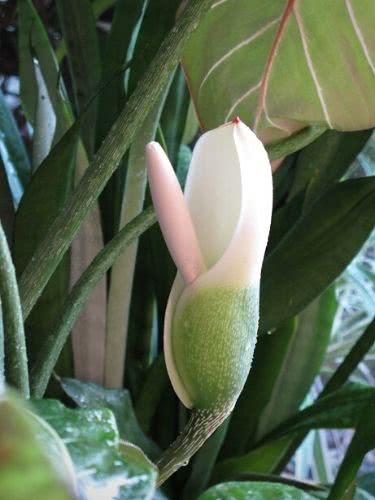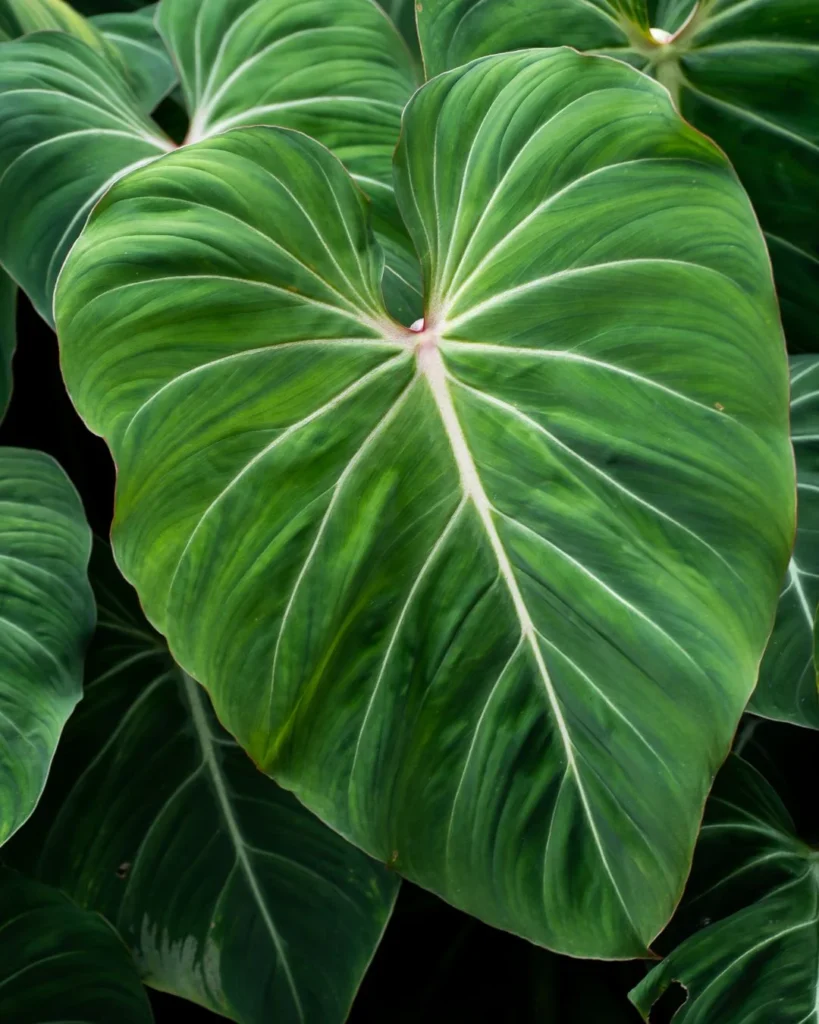
The Velvet Philodendron (Philodendron gloriosum) is a herbaceous, rhizomatous, and perennial species known for its lush foliage. Native to Central and South America, it thrives in the shade of trees within the valleys of tropical forests. Unlike other philodendrons, P. gloriosum doesn’t climb on tree trunks but rather develops as a creeper, with its rhizome spreading horizontally on the forest floor. Its leaves emerge from the rhizome and are supported by long petioles, reaching up to 90cm in length.
The heart-shaped leaves are dark green, with pronounced veins in light green, white, or even pink tones. Large and velvety, they feature pink or white margins. An interesting trait is that the leaves move throughout the day, following the sun’s light, similar to how the flowers of the sunflower (Helianthus annuus) behave. The species’ inflorescence emerges at the base of the rhizome during spring and summer. It’s a spadix-type inflorescence with a yellow, white, or wine-colored spathe. However, they hold less ornamental significance compared to the foliage.
This elegant species is perfect for ground cover in shaded garden spots where flowering plants typically struggle. True to its name, the Velvet Philodendron forms a substantial, dense mass under tree canopies. Another way to highlight its ornamental character is by cultivating it in pots, adding decoration to spaces such as living rooms, entry halls, offices, and more.

The large and velvety leaves add refinement and elegance to interior decor. It also brings a tropical atmosphere, aligning well with the latest trends in Urban Jungle aesthetics. This slow-growing plant is easy to care for and requires minimal maintenance.
Maintenance mainly involves cleaning the leaves, which, due to their size, tend to accumulate dust. A quick solution is to wipe them with a clean, damp cloth or give them a gentle shower with cold water. As for pruning, it’s necessary only to remove dead or yellowing leaves.
It thrives in partial shade or filtered light and prefers rich, well-draining, slightly moist soils. Be cautious about exposing it to direct sunlight, as it can lead to leaf yellowing. Watering should be spaced to avoid overwatering, which could lead to root and rhizome rot, hampering the plant’s growth. It appreciates high humidity, ideally ranging between 60 to 70%.
To maintain this level of humidity, consider using water-filled trays or an electric humidifier. During planting or repotting, ensure that its rhizome sits on top of the substrate, never buried. Allow it to naturally root while in contact with the damp substrate. Due to its creeping growth habit, shallow and wide pots are better choices than tall and narrow ones. Fertilization should occur during the growing season—spring and summer—moderately.
Opt for liquid or slow-release fertilizers, always following the manufacturer’s instructions and respecting the plant’s response to fertilization. It doesn’t tolerate frost and prefers temperatures above 13ºC (55ºF). It can be cultivated in coastal regions. Propagation is done through rhizome cuttings.


